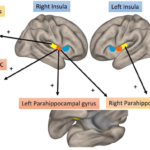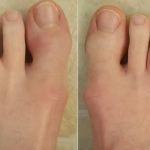“They really didn’t capture this patient diversity and complexity which is so essential to understanding this disease,” he said.
A scientist in his lab suggested injecting the NSG-SGM3 transgenic strain of mouse, designed for improving engraftment of human leukemia cells, with PsA patients’ peripheral mononuclear cells and sera. They found a startling similarity between the phenotype of the mouse and the patient.
“If the patient only has psoriasis, the mouse only gets psoriasis,” Dr. Ritchlin said. “If they have non-erosive PsA, the mouse gets non-erosive PsA. If they have erosive PsA, the mouse gets erosive PsA. And they have dactylitis the mouse gets dactylitis.” His lab has not yet looked at axial PsA, but plans to do so.
They found the arthritis phenotype is induced using only PBMCs, and when both serum and PBMCs are injected, the psoriasis is induced as well.
One of their observations with this model is that IL32 and CXCL14 production by CD8 + T cells is significantly increased in the synovia of these “hu-PsA mice.” They also found that anti-CD8 antibodies blocked development of arthritis.
“We’re very excited about this model because we’re now looking at treatment of non-responders, and we’re injecting these mice,” he said. “And we’re finding the mice are developing psoriasis and arthritis. And we’re really honing down on what the pathways are in those patients that are driving non-response.”
 Thomas Collins is a freelance medical writer based in Florida.
Thomas Collins is a freelance medical writer based in Florida.
References
- Culemann S, Gruneboom A, Nicolas-Avila JA, et al. Locally renewing resident synovial macrophages provide a protective barrier for the joint. Nature. 2019 Aug;572(7771):670–675.
- Paine A, Brookes PS, Bhattacharya S, et al. Dysregulation of bile acids, lipids, and nucleotides in psoriatic arthritis revealed by unbiased profiling of serum metabolites. Arthritis Rheumatol. 2023 Jan;75(1):53–63.



